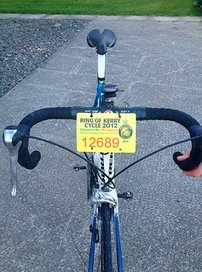COLLECTION OF BIKE TAGS AND WRIST BANDS
The purpose of the bike tags and wristbands is to allow cyclists through the checkpoints in the closed road sections of the cycle. It’s essential that each cyclist picks up their tag and wristband in advance of the cycle. Bike tags can be collected from the following locations:
Caherciveen
Date: Monday July 2nd
Time: 7.00pm-8.30pm
Venue: Market House, Caherciveen
Tralee
Date: Tuesday July 3rd
Time: 7.00pm-9.00pm
Venue: O'Donnells, Mounthawk, Tralee
Killarney
Date: Wednesday July 4th
Time: 6.00pm-7.30pm
Venue: KDYS, Fairhill, Killarney
Killarney
Date: Friday July 6th
Time: 1.00 pm – 22.00 pm
Venue: New Street Car Park
Killarney
Date: Saturday July 7th
Time: 5 am – 8am
Venue: New Street Car Park
IMPORTANT
Please ensure to bring a printed copy of your E-ticket, this is a PDF document that was attached to your Booking confirmation email. We can also scan the e-ticket directly from your mobile phone/ tablet; along with Photo ID
You need to display your bike tag clearly on your handlebars as shown below.
This is the only acceptable position and will ensure your speedy passage through the checkpoints.

FOOD STOPS
There are two major food stops on the route, one in Cahersiveen and the other in Kenmare.
Enable Ireland will have a team of volunteers at the break in Cahersiveen so please say hello!
Anyone with fundraising money can drop it off when they come to collect their tags or alternatively forward it to Enable Ireland, Orchard Way, Oakview Village, Tralee.
The very best of luck with your cycle!